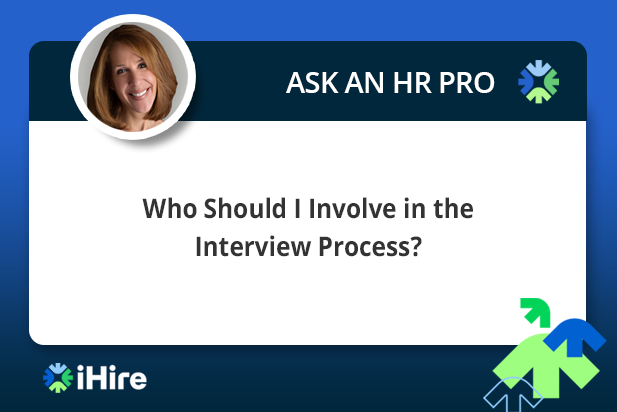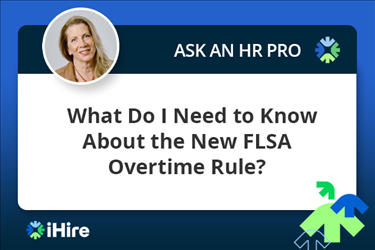- Employer Resources
- |
- Last Updated: February 21, 2023

Ask an HR Pro: Who Should I Involve in the Interview Process?
The interview process is complicated, and if you don’t get it right, it could lead to bad hires and wasted hours. But who should be helping you interview candidates? And is it possible to have too many people involved? In this Ask an HR Pro, we ask iHire’s Chief People Officer Lisa Shuster, SHRM-SCP, SPHR, to weigh in.
How Many People Should You Include in the Interview Process?
The short answer: as many people as possible!
“Team decision-making often yields better results than when a choice is made solely by one individual – and in hiring, it’s no different!” Shuster explained. “In fact, hiring decisions are some of the most important and difficult ones to make, especially due to the potential downside if the wrong person is hired. Accordingly, having more people involved in the interview process can provide you a broader perspective and more insight into the candidate while also reducing potential biases.”
So, which employees should you include? Other than the direct supervisor, Shuster said others you may wish to involve could be additional managers, peers from the same team, and peers from other teams that may work closely with the new hire.
“These are all people who can share thoughts on the skills and characteristics needed for the job due to their experience in their own roles.”
Create Your Account Today
Why Collaborative Interviewing is Beneficial
Other than broader perspectives and reduced likelihood of biases, Shuster said a collaborative interviewing approach provides additional benefits:
- Your employees will feel appreciated and trusted. Inviting their participation demonstrates that you value the opinions and perspectives of your employees in important company decisions.
- Hiring is a skill that takes time and experience to hone. By involving your employees, you are helping to develop key managerial skills such as interviewing, evaluating, and selecting candidates – skills that will benefit both you and them as they continue to grow.
- The candidate gets a broader perspective into your company, people, and culture. The best candidates want to ensure that they are going to be working alongside great co-workers. Letting them see more of your recruitment team enables them to make a more informed decision.
Potential Pitfalls to Avoid
On the other hand, collaborative hiring is not without its downsides:
- Involving more people makes the process longer. This is a significant issue at a time when the difference of just one day can cause you to miss out on your top candidate. You can address this by scheduling interviews on the same day, scheduling panel interviews, or even using virtual interviews if key recruitment team members are not available onsite during the time of the interview.
- Employees may not be trained in hiring. This can result in unstructured interviews and irrelevant or even illegal questions. Further, it can be challenging to get employees to document and provide their feedback on the candidate. Even so, some employers may simply be fine with winging it; others may elect to provide training in collaborative hiring.
- Some employees may feel threatened by highly qualified candidates. Insecurities may result in the intentional or subconscious recommendation of a weaker hire. Of course, this can also happen when there is just one hiring manager in charge of the process.
Shuster had one final note of caution: “Be careful about soliciting opinions from others and then choosing to ignore them. If employees feel that their feedback is ignored or disregarded, they may choose to forgo future participation in the hiring process.”
Collaboration is a key component of today’s work environment, and there is no good reason not to apply it to the ever-important hiring process. Collaborative hiring yields better decisions with reduced biases, further develops your employees, and provides a broader perspective for your candidates. While there are some challenges, those risks can be strategically mitigated and, in most cases, the benefits far outweigh the risks.
Want more hiring advice? Check out our Employer Resource Center for additional articles and templates.

Originally Published: February 21, 2023




